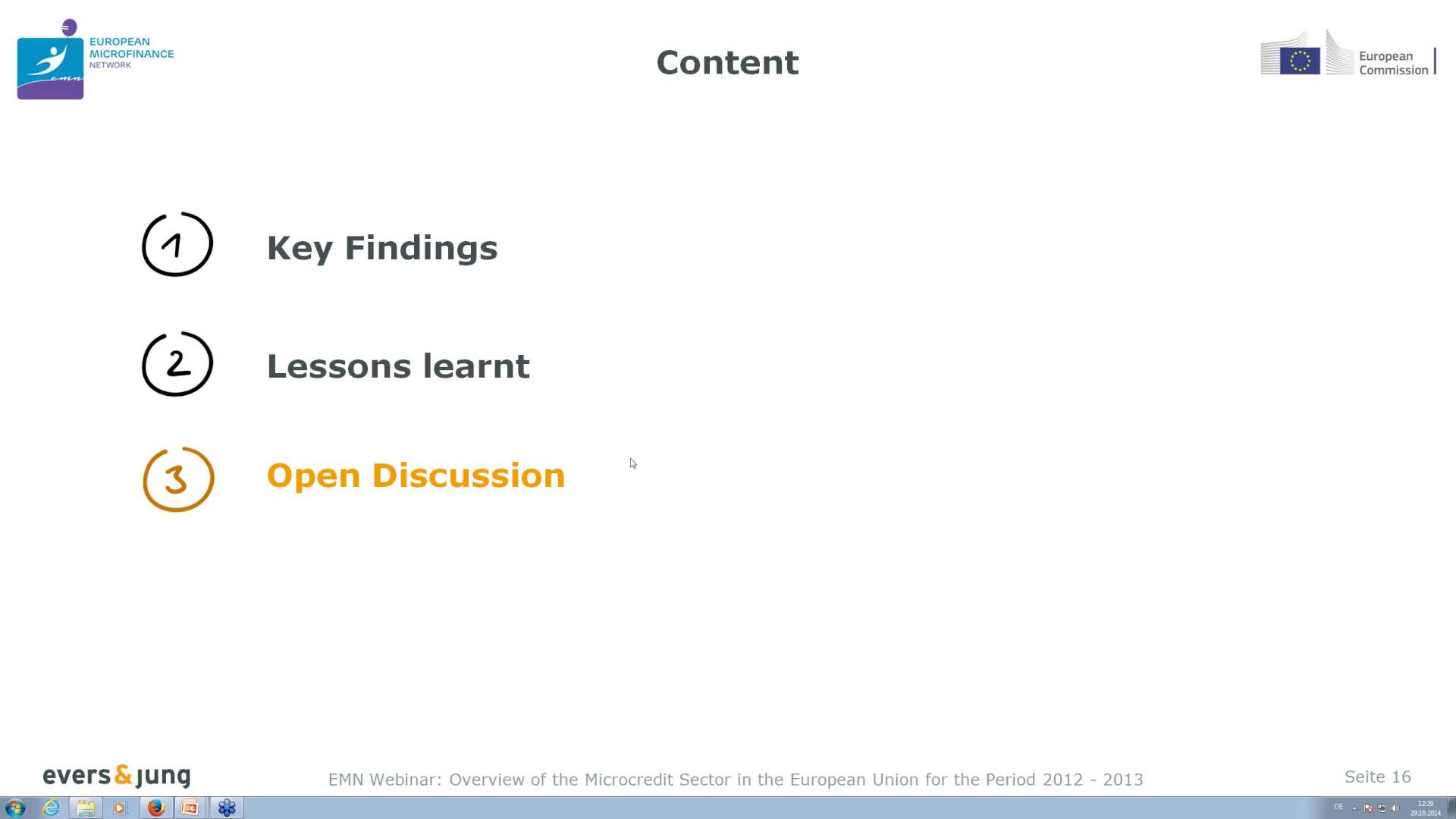Objective
EMN’s first webinar came along with the publication of the EMN Microcredit Overview Survey Report on 2012-13. Rather than only presenting you the main conclusions, the goal of the webinar was to stimulate a discussion on the path forward of the publication. We opened the discussion by asking for your constructive feedback on the present report and collect ideas from you (“crowdsourcing”) on:
- How can we further improve the Overview Survey Report to make it more representative of the situation of the sector?
- Do you think that a more specific definition of microcredit would be needed to improve representativeness? If yes, which suggestions do you have about this definition?
- What are your suggestions to make this report a valuable source of information on the European Microfinance Sector?
The webinar was presented by:
- Mrs. Caroline LENTZ, Operations Manager at EMN (Moderator);
- Mr. Michael UNTERBERG & Mr. Benjamin SARPONG consultants at Evers & Jung, Germany, and co-authors of the two last editions of the EMN Overview Survey Report (Presenter).
Outputs
- To read the presentation shared by the presenters during the webinar, click below the video
- Below the videocan find the minutes of the session.
- And if you prefer to watch and listen to the webinar recording :



